Why use horse manure
Sometimes your options are limited. Like when dealing with a very complicated, multi-step moving/building project. That is why this past spring, I planted my garden directly in horse manure.
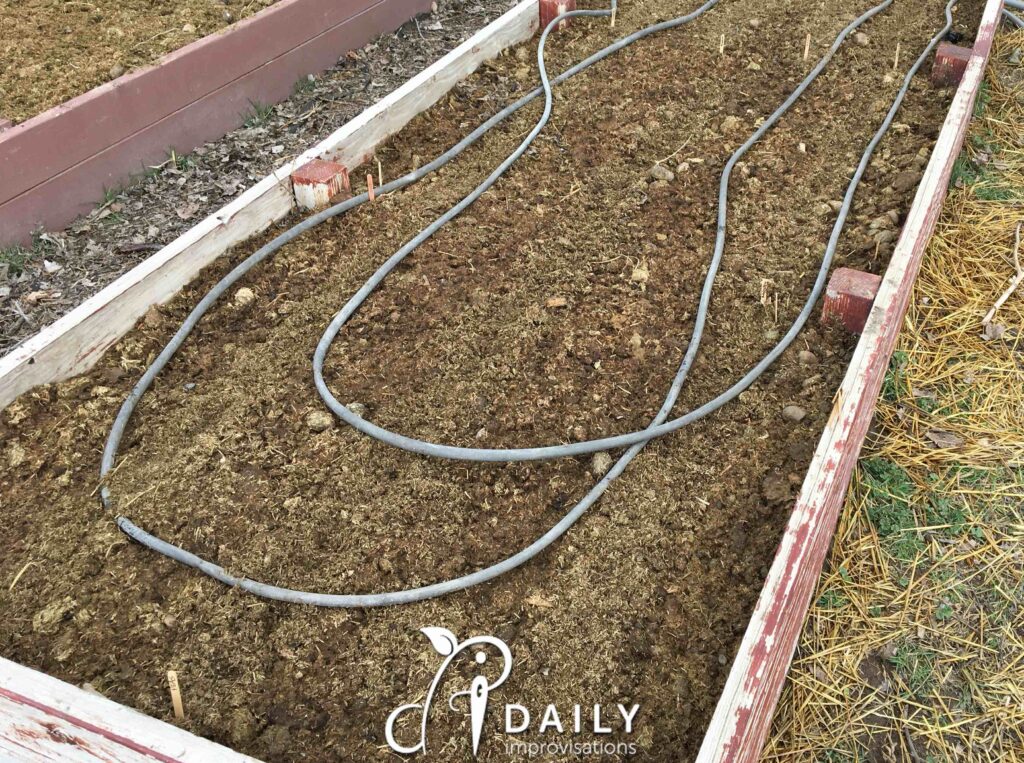
To be sure, I know that most animal manure needs to be aged to work well in the garden. Not only can fresh manure be too strong for the plants, but its nutrients are not yet in forms that plants can use well. The exceptions are goat and rabbit manure, which seem humorously designed for immediate pelleted application.
I have a lot of experience with fresh chicken manure, rabbit and goat droppings, and composted plant matter. I have even used composted horse manure in the past, but this year all I had available was a lot of fresh horse manure.
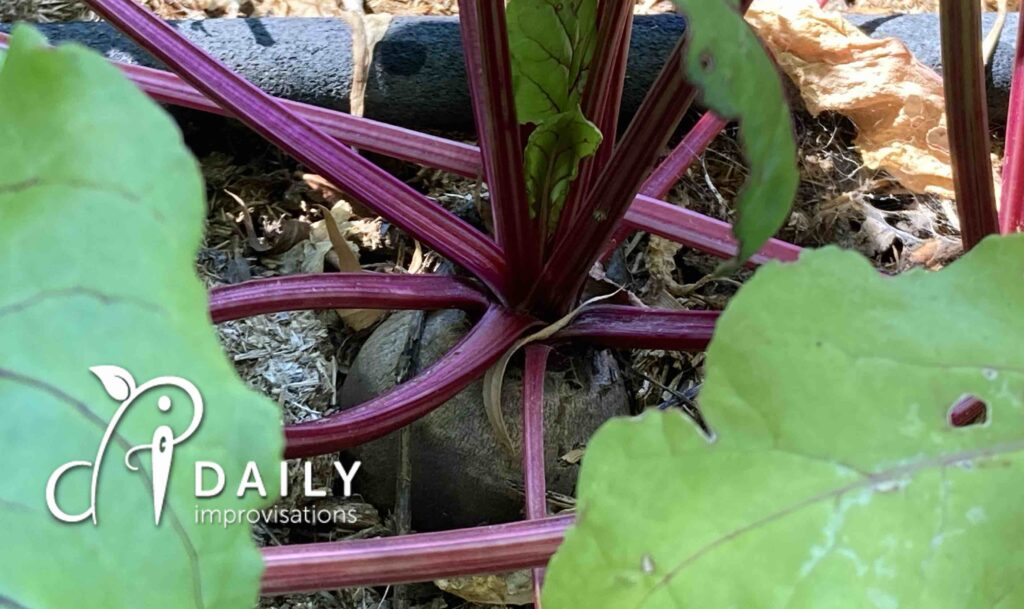
I was fortunate to have three raised beds on our new, temporary property, but they were only minimally filled with hard pan clay. The timing of moving and spring planting was such that I could either plant is this packed dry clay or make use of the horse manure piling up in the horse pen.
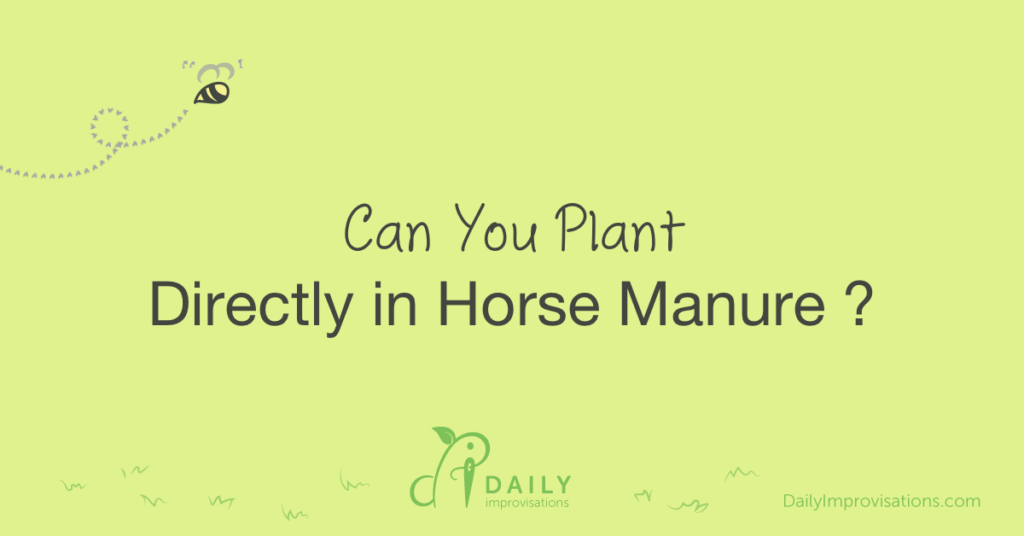
Lawn clippings versus horse manure
Since I have mulched with fresh lawn clippings for many years at our previous home, I figured horse manure was at least more processed than that!
I would never plant directly in lawn clippings because they can’t provide the root support, water retention, and nutrient variety that soil can. However, the 1-2 inch grass layers worked well as mulch and became compost for the next year’s garden without dealing with them in a compost pile.
In the current situation, I did have the advantage of some soil getting scooped up as I shoveled the horse manure out of the dry lot into the trailer. Also, it was not all super fresh manure. The previous owners had not been into regular clean up, so there was a layer of fairly well composted cow and horse manure getting mixed in with lots of fresh horse apples.
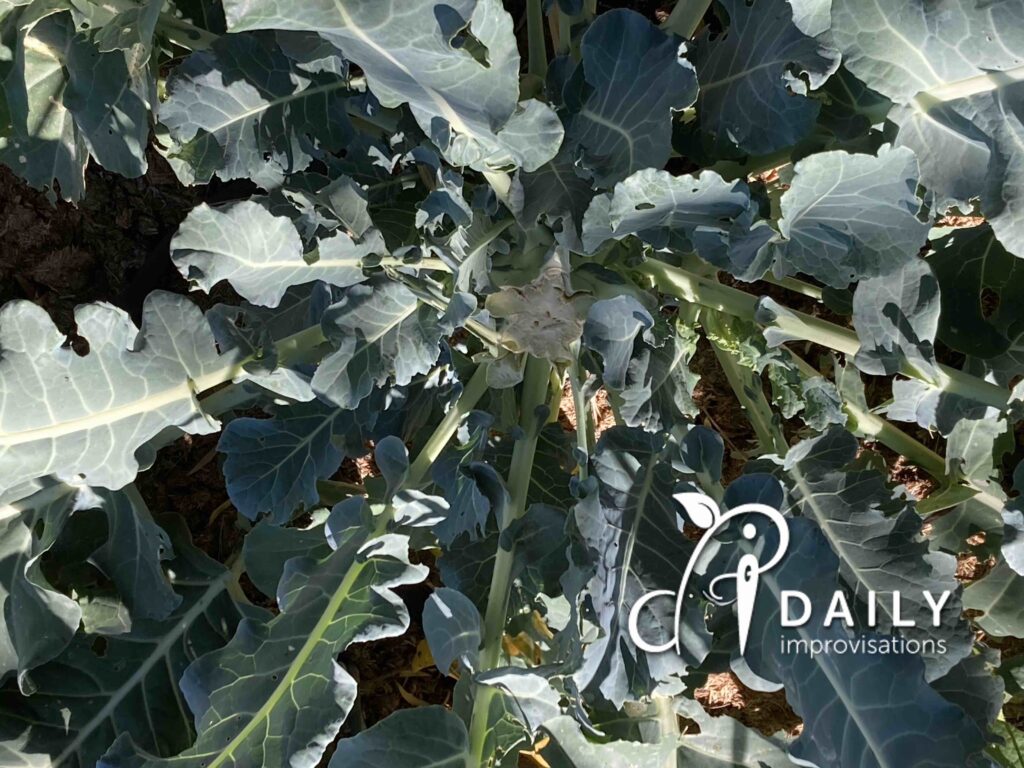
On to the raised beds
This mix went straight into my raised beds. I also created two other long rows along the perimeter of the little fenced garden.
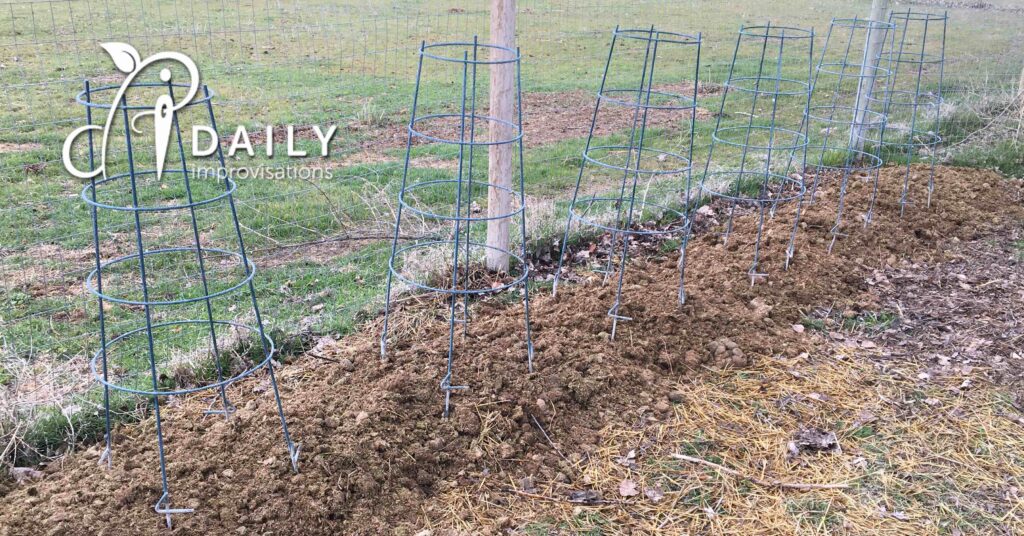
While I did begin by attempting to break apart the many more solid clumps of manure, it soon became apparent that would take hours or heavy machinery, neither of which I had. So, I raked it all as flat as I could.
Next, I set up the soaker hose and Netafim drip lines I had. Then I watered it all well for a few days.
Seedlings without grow lights
Meanwhile, I was trying my hand at starting seedlings without the benefit of grow lights. My strategy was to start them in the warm indoors, then put them outside for sunlight as soon as they popped up their little heads.
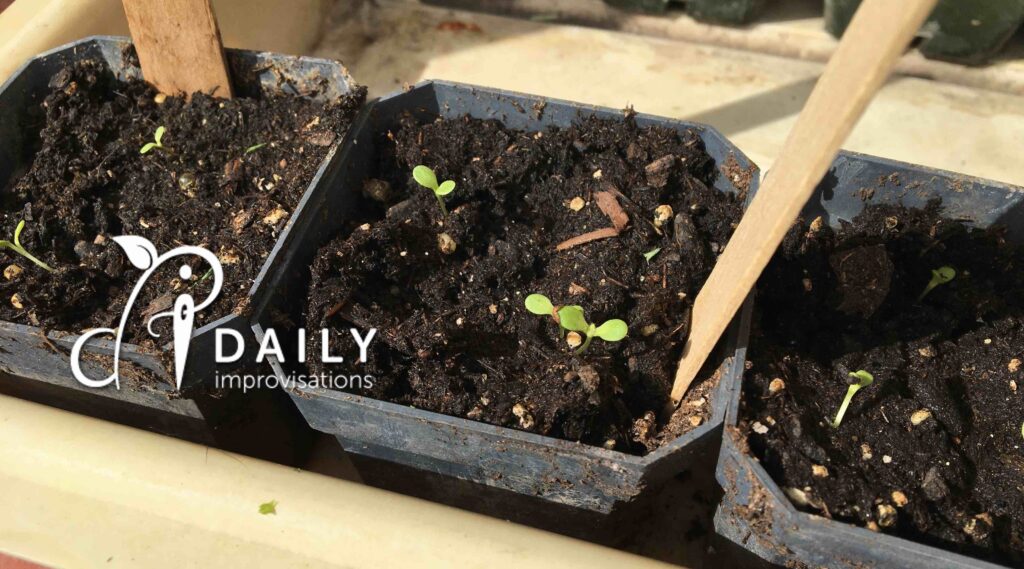
The challenges here were twofold:
- Not every day had weather that was safe for the seedlings
- The chickens ended up being free range throughout the whole yard
I was able to use the south facing front porch area until the chickens showed interest. Then I made the extra effort of carrying the seedling trays out to a small plastic table I had placed in the fenced garden area. I did this for gradually increased time periods until the seedlings were hardened off.
Choices at planting time
Because I had very limited space for dealing with seedlings in pots, I needed to plant by direct seeding as much as possible. I had to make this decision based on past experience and what the seed packets suggested. This is where things got troublesome.
It became obvious right away that small seeds were falling down into miniature caverns created by the lumps in the horse manure mix. Try as I might to make adjustments right in the area of planting, the horse manure mix was just too porous.
This meant the seeds would be too far down if they germinated. But I was also noticing that the seeds might be having trouble having enough contact with any soil to get a roothold when they did germinate.
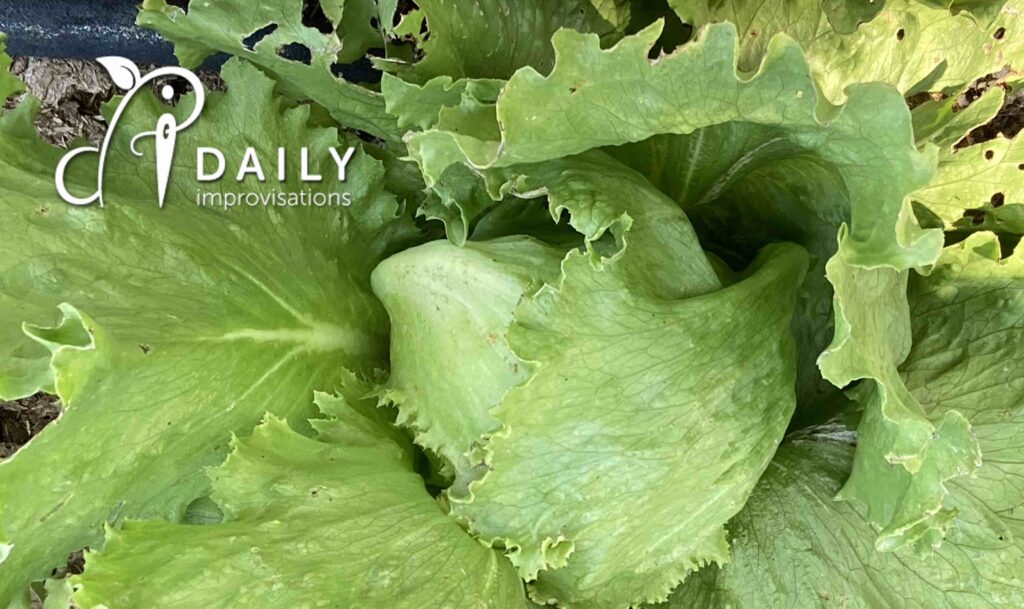
To deal with this, I tried a thin layer of potting soil both under and on top of some of the smaller seeds. I have used a layer of potting soil over small seeds, like carrots, in the past to avoid the crusting over that blocks successful germination.
Unfortunately, this did not make any measurable difference. My germination rate from all direct seeded seeds was abysmally low. I never saw seedlings from about half the things I planted. The other half of things only yielded one or two plants per row.
The only exception to this was green beans and spinach. The green beans doing well makes some sense to me, since they are larger seeds. But squash, melons and cucumbers are also larger seeds, but had low germination rates, so this cannot be the whole answer.
And, of course, spinach are smallish seeds, but even though they had higher germination than most other seeds, they weren’t nearly as good as the beans.
Could it be about the water?
Another thing I noticed about the horse manure mix is that it both drained relatively fast and formed a dry crust on top. We did have some good periods of rain this spring, but there were some dry spells in between those that could have been tough on the seeds trying to germinate.
Since I don’t have a sprinkler set up in this garden area, I was relying on drip irrigation more.
I then tried to overcome this by sprinkling by hand more often, but I don’t think I added this soon enough for the first planting.
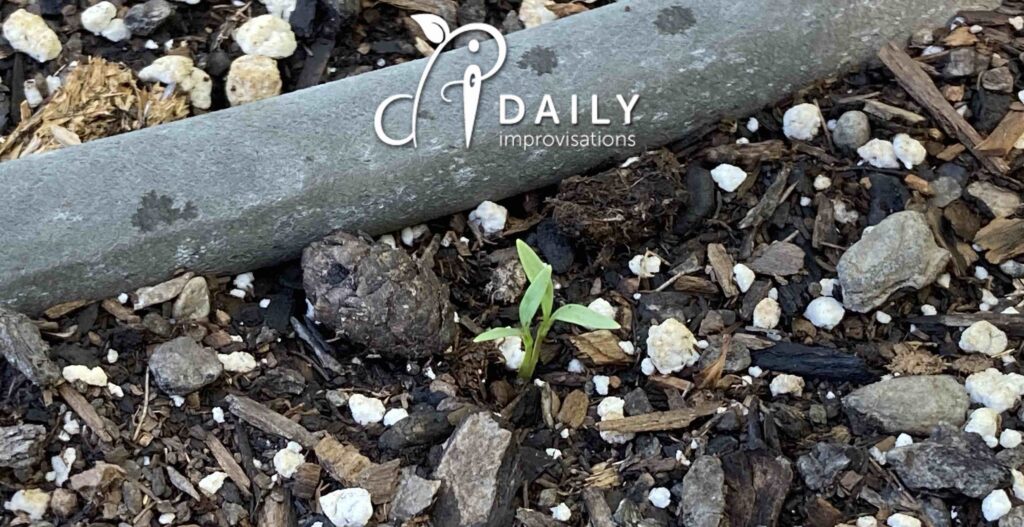
Seedlings are better than seeds
I have had very good success with direct seed planting in my past 30 years of gardening, so I’m pretty sure the problem with seeds germinating in horse manure is not because of me.
Even with my challenging indoor seed starting this spring, I had quite a few plants do well and get transplanted out into these impromptu horse manure filled raised beds.
All of those plants are thriving! I have glorious broccoli and tomatoes going crazy. The pepper plants and few flowers are doing very well. The cucumbers are producing and the melons have blossoms.
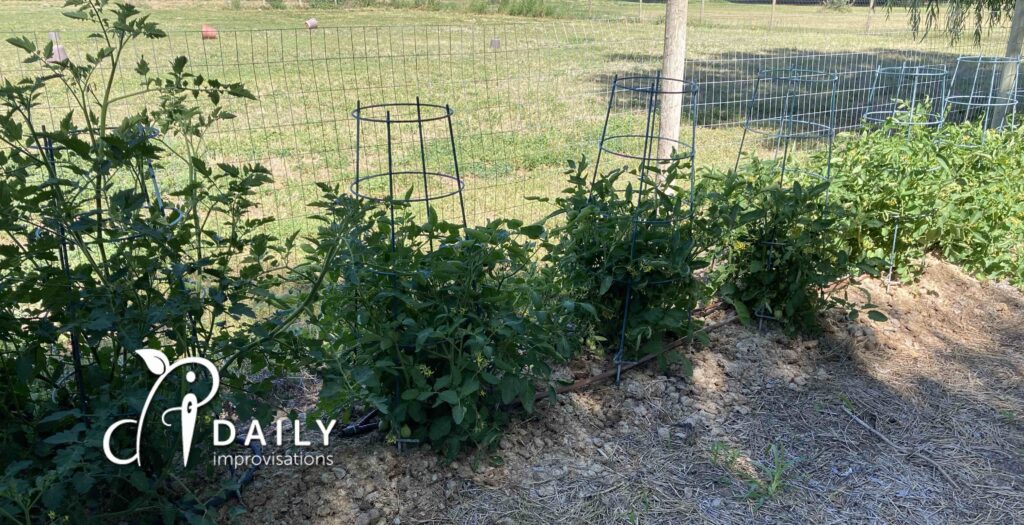
So it doesn’t seem to be an issue of whether or not plants can grow in horse manure. This is verified by the fact that the few things that did end up germinating well grew vigorously. We have eaten scrumptious lettuce, delicately flavored zucchini, and the best broccoli we can remember eating!
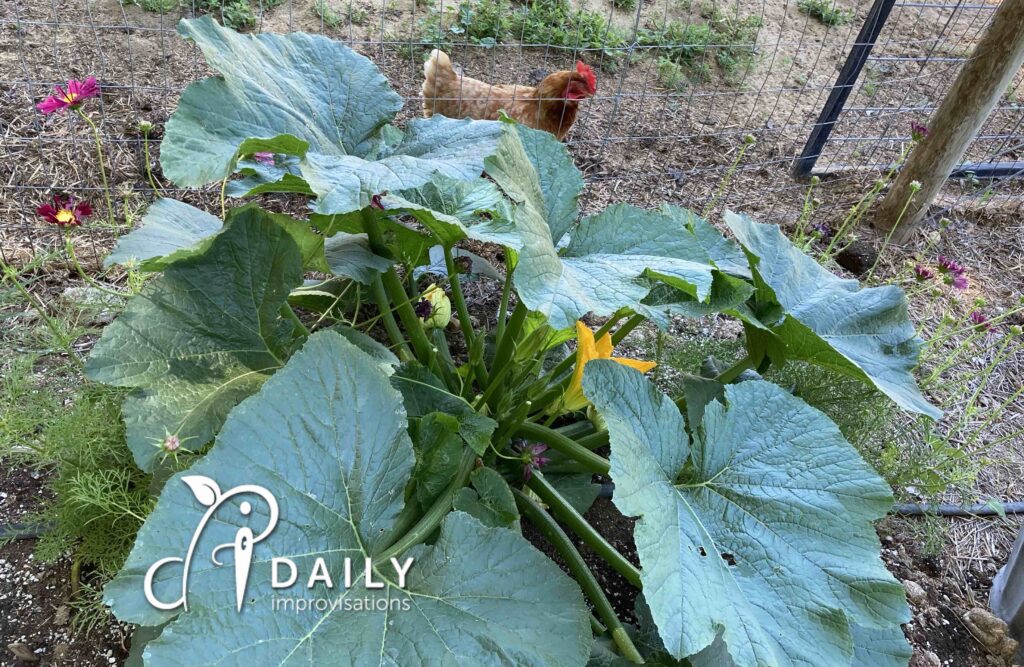
Succession planting in horse manure
Since the garden is small and there are empty spaces, I am starting succession planting. I am doing it two ways.
- I direct planted some bush beans, beets, and cilantro. I figure there is a decent chance the beans can mature before fall. I never planted cilantro earlier, but it grows like a weed, so hopefully it will do that here. The beets are sprouting better this time around.
- I planted some cool weather things in pots for transplanting later.
Most cool weather seeds won’t germinate well in soil at summer temperatures anyway. I have a lot of shade on this property, so I think I will be able to harden them off without frying them in the afternoon sun or making the lettuce bolt when it is one inch tall.
I’ll probably try transplanting some of these things out when they are fairly small. Things like cabbage and peppers can handle the heat. The lettuce I will do in stages to see how things go.
I’m also experimenting with carrots, which I have never grown in pots before. I know their roots are supposed to be very sensitive to transplanting, but I often learn very useful variations in how to do things by just trying.
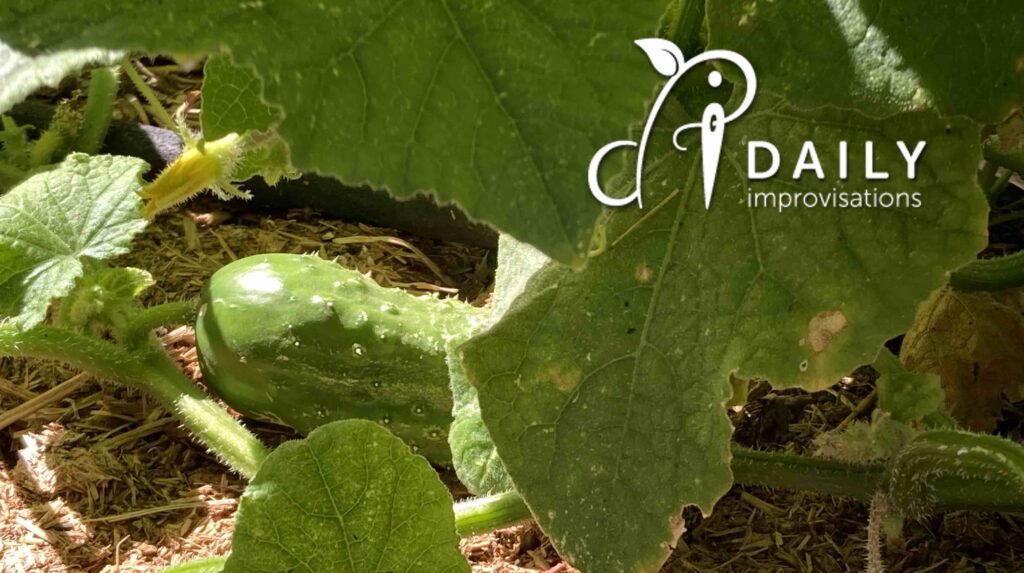
Would I do it this way again?
Push come to shove, yes. And now I know more about what might work and how I might do things differently.
However, we should be moving into our new house this fall and setting up a long term garden area. I will surely be using horse manure (I have a horse), but will compost it first. I will have a greenhouse and grow lights, so that will not be an issue.
Still, I’m pretty satisfied with my little experiment. Just one more gardening adventure to teach me about how this all works!
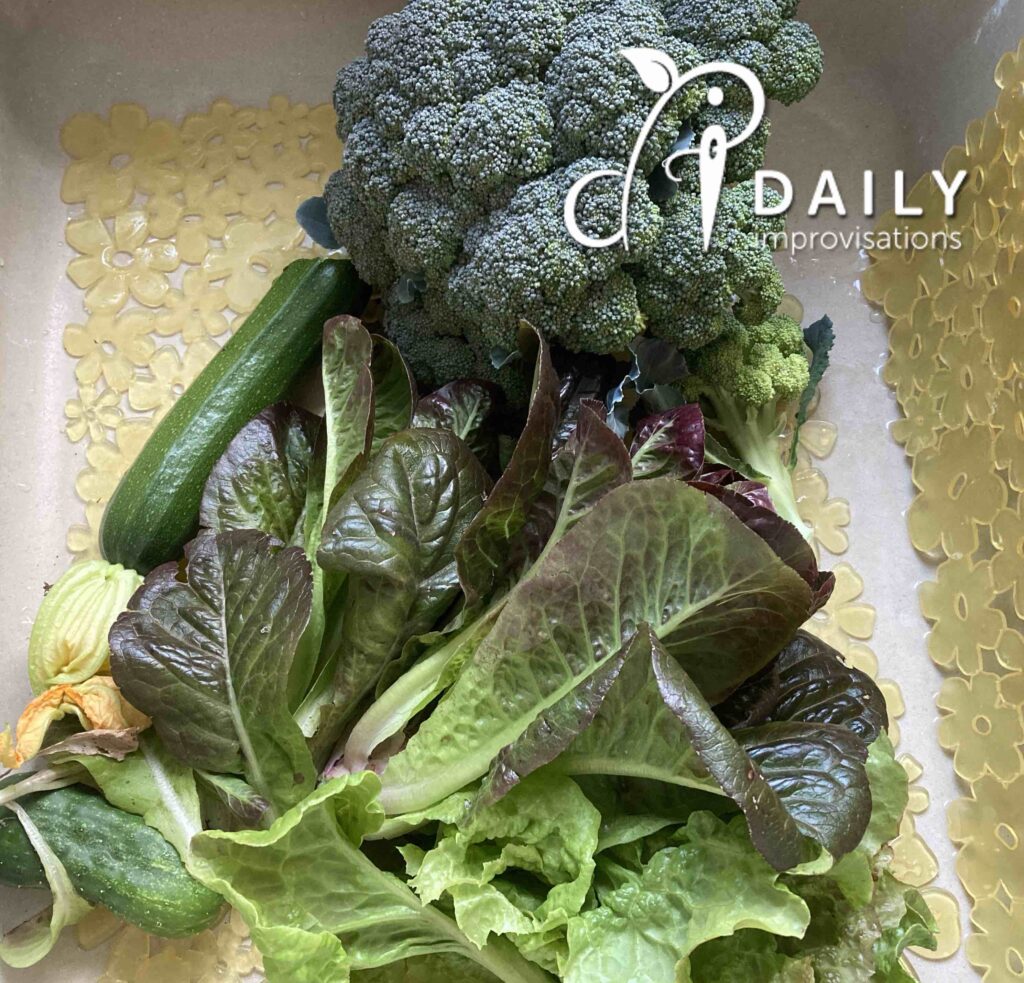

Leave a Reply